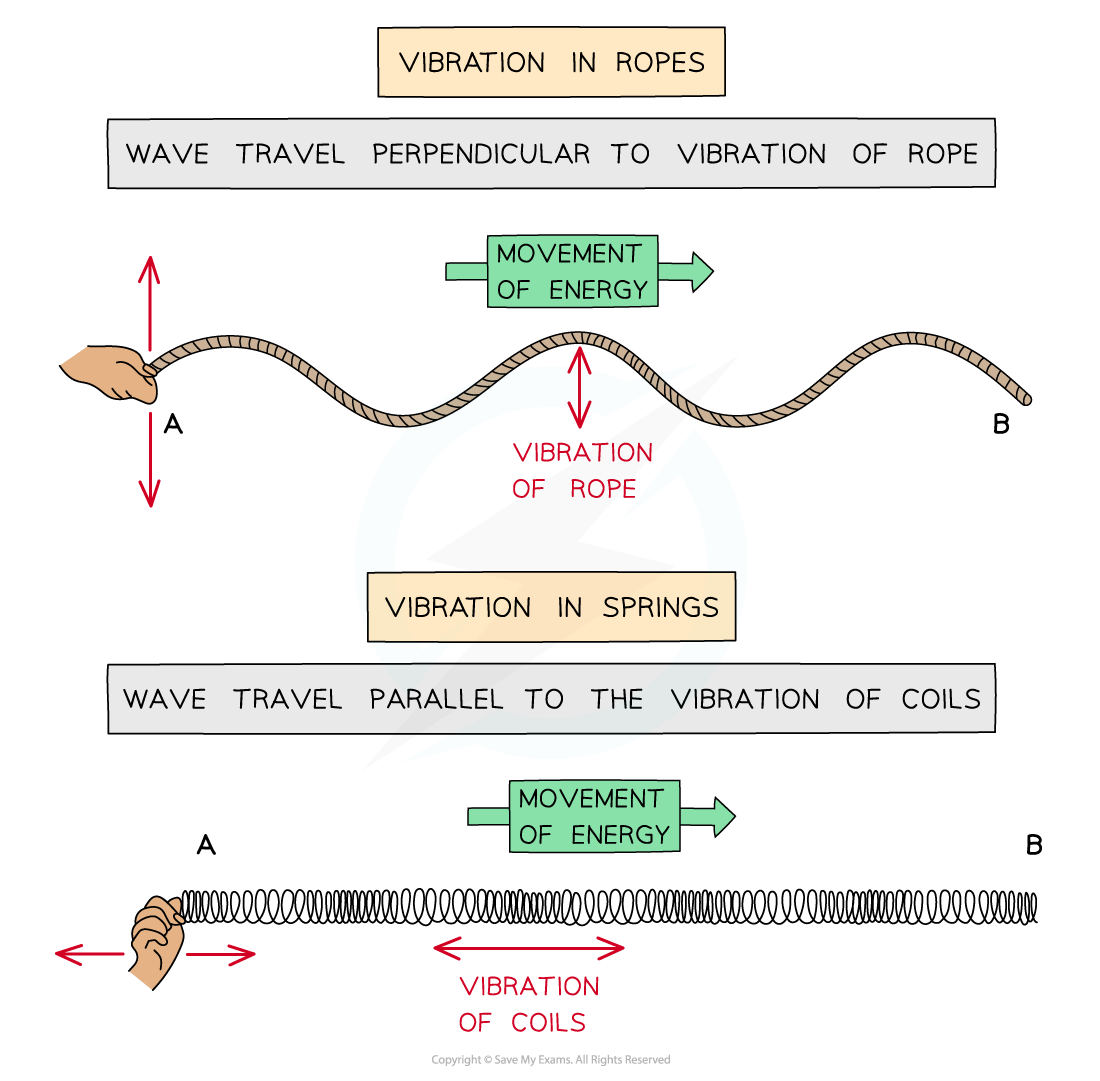Features of Waves (Cambridge (CIE) IGCSE Physics) : Revision Note
Did this video help you?
Waves & energy transfer
Waves transfer energy without transferring matter
For sound waves, this means it is the wave and not the air molecules (the matter) itself that travels
Objects floating on water provide evidence that waves only transfer energy and not matter
It is possible to see objects on the surface of the water bob up and down but not change their position
This is because the wave and not the water (the matter) itself that travels
Waves are described as oscillations or vibrations about a fixed point
For example, ripples cause particles of water to oscillate up and down
Sound waves cause particles of air to vibrate back and forth
Worked Example
The diagram below shows a toy duck bobbing up and down on top of the surface of some water, as waves pass it underneath.

Explain how the toy duck demonstrates that waves do not transfer matter.
Answer:
The plastic duck moves up and down but does not travel with the wave along the surface of the water
The water waves transfer energy, but the water particles do not move
This means when a wave travels between two points, no matter travels with it, the points on the wave vibrate up and down about fixed positions
Objects floating on the water bob up and down when waves pass under them, demonstrating that there is no movement of matter in the direction of the wave, only energy
Examiner Tips and Tricks
There is a key distinction between the particles (or oscillations) of a wave, and the wave itself.
The motion of the wave causes the particles to move. The particles themselves are not the wave.
Wave motion
Wave motion can be illustrated by:
vibrations in ropes and springs
experiments using water waves
Wave vibrations

Waves can be shown through vibrations in ropes or springs
Properties of waves can be observed using water waves in a ripple tank
Properties include frequency, wavelength and wave speed as explained in the next section
Wave motion in a ripple tank

Wave motion of water waves may be demonstrated using a ripple tank
Features of a Wave
When describing wave motion, there are several terms which are important to know, including:
Wavefront
Wavelength
Frequency
Crest (peak)
Trough
Amplitude
Wave speed
Wavefront
Wavefronts are a useful way of picturing waves from above: each wavefront is used to represent a single wave
The image below illustrates how wavefronts are visualised:
The arrow shows the direction the wave is moving and is sometimes called a ray
The space between each wavefront represents the wavelength
When the wavefronts are close together, this represents a wave with a short wavelength
When the wavefronts are far apart, this represents a wave with a long wavelength
Wavefronts are viewed from above

Diagram showing a wave moving to the right, drawn as a series of wavefronts
Wavelength
Wavelength is defined as:
The distance from one point on the wave to the same point on the next wave
In a transverse wave:
The wavelength can be measured from one peak to the next peak
In a longitudinal wave
The wavelength can be measured from the centre of one compression to the centre of the next
The wavelength is given the symbol λ (lambda) and is measured in metres (m)
The distance along a wave is typically put on the x-axis of a wave diagram
Wavelength and amplitude of a transverse wave

Diagram showing the amplitude and wavelength of a wave
Frequency
Frequency is defined as:
The number of waves passing a point in a second
Frequency is given by the symbol f and is measured in Hertz (Hz)
Crests & troughs
A crest, or a peak, is defined as:
The highest point on a wave above the equilibrium, or rest position
A trough is defined as
The lowest point on a wave below the equilibrium, or rest, position
Wave crests and troughs

Diagram showing a crest and a trough on a transverse wave
Amplitude
Amplitude is defined as:
The distance from the undisturbed position to the peak or trough of a wave
It is given the symbol A and is measured in metres (m)
Amplitude is the maximum or minimum displacement from the undisturbed position
Wave speed
Wave speed is the speed at which energy is transferred through a medium
Wave speed is defined as:
The distance travelled by a wave each second
The equation used to calculate wave speed is explained in The wave equation
Worked Example
Small water waves are created in a ripple tank by a wooden bar. The wooden bar vibrates up and down hitting the surface of the water. The diagram below shows a cross-section of the ripple tank and water.

Identify the letter which shows:
a) The amplitude of a water wave.
b) The wavelength of the water wave.
Answer:
Part (a)
Step 1: Recall the definition of amplitude
Amplitude = The distance from the undisturbed position to the peak or trough of a wave
Step 2: Mark the undisturbed position on the wave
This is the centre of the wave

Step 3: Identify the arrow between the undisturbed position and a peak
The amplitude is shown by arrow D
Part (b)
Step 1: Recall the definition of wavelength
Wavelength = The distance from one point on the wave to the same point on the next wave
Step 2: Draw lines on each horizontal arrow
This helps to identify the points on the wave the arrows are referring to

Step 3: Identify the arrow between two of the same points on the wave
The wavelength is shown by arrow C

You've read 0 of your 5 free revision notes this week
Sign up now. It’s free!
Did this page help you?

